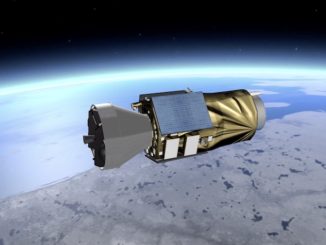
The European Space Agency has selected a satellite mission to monitor the health of global vegetation over an atmospheric research project to track carbon in Earth’s atmosphere, officials announced Thursday.
The competition pitted the Fluorescence Explorer, or FLEX, against CarbonSat to be the eighth satellite in ESA’s Explorer mission line for a launch in 2022.
Scientists recommended ESA proceed with the FLEX mission in September, and the space agency’s Earth observation management board approved the selection this month, according to a press release Thursday.
Expected to cost approximately $300 million — less than 300 million euros — the FLEX mission will measure the faint glow given off by plants as they convert sunlight and carbon dioxide into energy, a process known as photosynthesis.
The research will help track the health and stress of plants around the world, aiding studies of agriculture and food stocks as Earth’s growing population places more demands on global resources.
“FLEX will give us new information on the actual productivity of vegetation that can be used to support agricultural management and the development of a sustainable bioeconomy,” said Jan Woerner, ESA’s director general. “It will therefore help to understand our ecosystem.
“With the selection of the FLEX mission, ESA Member States have continued to show their determination to provide essential data to the scientific community to better understand our planet while at the same time serving society,” Woerner said in a statement.
Plants emit a faint fluorescence as their cells process sunlight to produce energy to sustain their growth, and FLEX will be the first mission to measure the glow with enough fidelity and resolution to determine plant health and stress levels.
The amount of fluorescence depends on the efficiency of photosynthesis within the plant cells.
The FLEX satellite’s instrument — called FLORIS, or the Fluorescence Imaging Spectrometer — will quantify plant glow in blocks of about 90,000 square meters, or 22 acres, capturing the scale of individual agricultural and forestry management units, according to a report on the mission presented to ESA management.
FLEX follows a series of Earth Explorer missions developed by ESA, beginning with the GOCE satellite focused on Earth’s gravity and ocean circulation and the SMOS project studying soil moisture and ocean salinity.
GOCE and SMOS launched in 2009, followed by liftoff of Europe’s CryoSat 2 mission measuring the thickness of Earth’s ice sheets in 2010. The three-satellite Swarm magnetic field mission launched in 2013.
Europe’s ADM-Aeolus wind measurement satellite will launch in 2017, followed in 2018 by EarthCare, a joint European-Japanese mission to study how clouds and aerosols reflect solar radiation back into space, a variable critical in climate outlooks.
Biomass is the seventh Earth Explorer mission, selected by ESA in 2013 for a 2020 launch, with a new type of radar to tally the mass of the world’s forests and track their growth and contraction caused by seasons, climate and human activity.
“The selection of FLEX is an important milestone in our series of Earth Explorer missions,” said Volker Liebig, ESA’s director of Earth observation programs. “FLEX will give us a better understanding of an important part of the carbon cycle and provide important information about the health and stress of the planet’s vegetation.
“Through this, FLEX might make a contribution to the understanding of feeding the increasing population of our planet,” Liebig said in a statement.
FLEX will fly in formation with one of Europe’s Sentinel 3 Earth observation satellite in a sun-synchronous orbit 815 kilometers, or 506 miles, in altitude.
The satellite, to be built by Airbus Defense and Space or Thales Alenia Space, is baselined for launch on a Vega rocket from Europe’s spaceport in French Guiana.
Email the author.
Follow Stephen Clark on Twitter: @StephenClark1.



